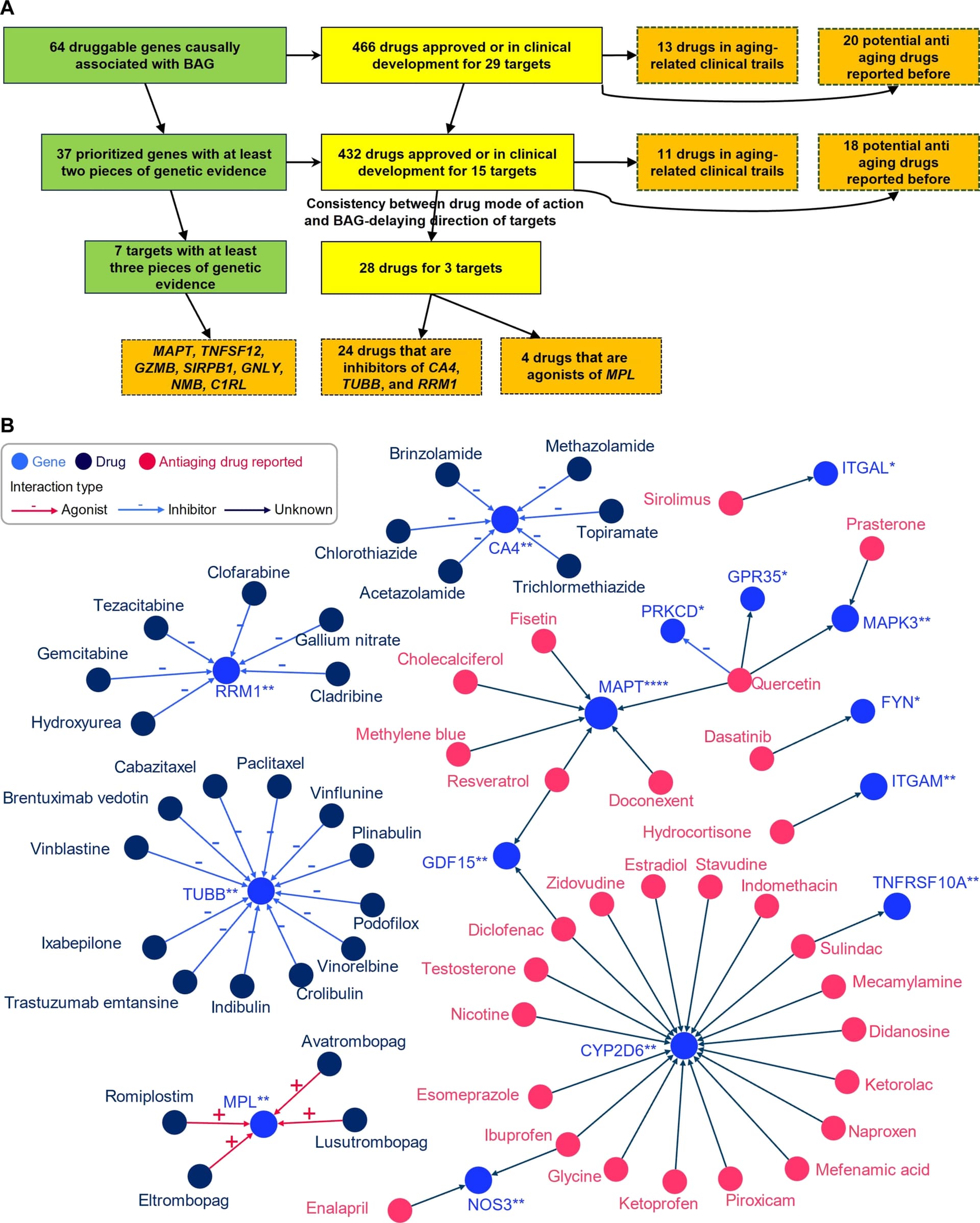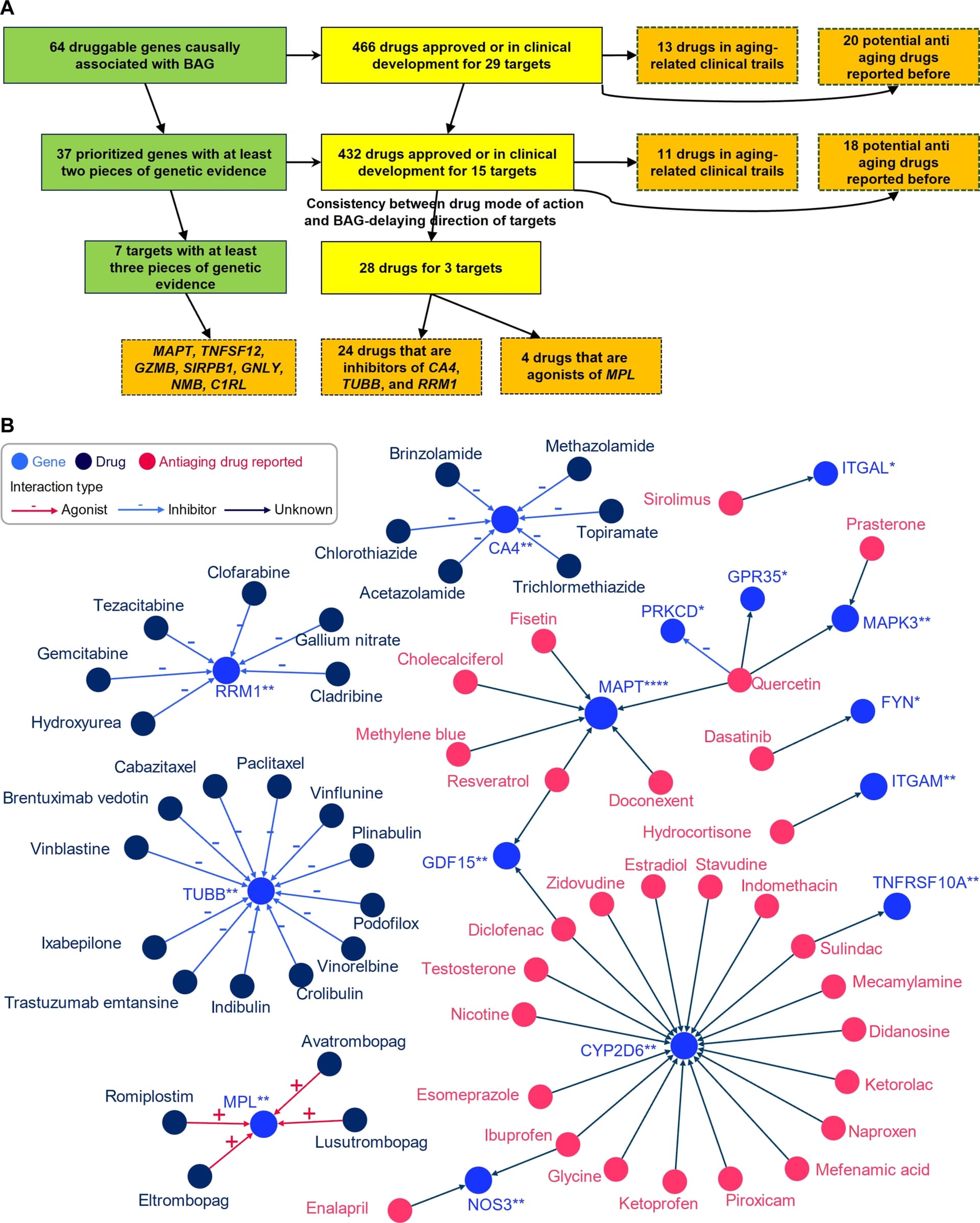estradiol and rapamycin / sirolimus are on the list…
To find genes that accelerate brain ageing and widen this gap, Zhengxing Huang at Zhejiang University in China and his colleagues trained a deep-learning model called 3D-ViT on some medical records and used others to check it gave accurate responses.
They then used it to analyse data from nearly 39,000 people who had health, genetic and lifestyle information, along with biological samples, stored in the UK Biobank. These participants were 64 years old, on average, and about half were women.
3D-ViT identified signatures in the participants’ MRI scans that could be used to estimate their biological brain age. Signs of accelerated ageing particularly appeared in brain regions known as the lentiform nucleus, which is involved in cognition, such as attention and working memory, and the posterior limb of the internal capsule, which connects various regions to the brain’s cerebral cortex – used for thought and language processing.
Huang and his colleagues also found that the participants’ scores on cognition tests dropped as their brain age gap increased.
Comparing their gene variants with the size of their estimated brain gaps flagged 64 influential genes, but Huang and his colleagues focused on seven: MAPT, TNFSF12, GZMB, SIRPB1, GNLY, NMB and C1RL, partly because these all have a particularly strong effect on brain ageing.
Clinical trials have also shown that their activity can be targeted by 13 drugs or supplements. These include cholecalciferol, a supplement for vitamin D deficiency; dasatinib, a leukaemia drug; diclofenac, a non-steroidal anti-inflammatory; doconexent, an omega-3 fatty acid; estradiol, the type of oestrogen commonly used in hormone replacement therapy; hydrocortisone, commonly used to treat eczema; and mecamylamine, a drug that lowers blood pressure.
The others were nicotine; prasterone, which relieves vaginal pain during sex during the menopause; the supplements quercetin and resveratrol; sirolimus, which is commonly used to suppress the immune system after a kidney transplant; and testosterone.
Read the full story: The 13 drugs and supplements that could slow brain ageing (NewSci)
Journal reference (open access):
Science Advances DOI: 10.1126/sciadv.adr3757
Drug repurposing reveals 29 candidate drugs for brain aging
Our analysis of MR and colocalization has identified 64 druggable genes as potential targets for BAG, suggesting their possible roles in anti-brain-aging mechanisms. By using the drug-gene interaction database, DGIdb, we have identified 466 drugs that are either approved or undergoing clinical development, targeting 29 of the 64 identified genes (Fig. 5A and data S22). Notably, 29 drugs (cholecalciferol, diclofenac, didanosine, doconexent, enalapril, esomeprazole, estradiol, fisetin, glycine, hydrocortisone, ibuprofen, indomethacin, ketoprofen, ketorolac, mecamylamine, mefenamic acid, methylene blue, naproxen, nicotine, piroxicam, prasterone, quercetin, resveratrol, sirolimus, stavudine, sulindac, testosterone, dasatinib, and zidovudine) have shown potential in clinical trials for brain aging, as recorded in ChEMBL or reported by researchers (Figs. 1 and 5B). Among these drugs, 20 (dasatinib, diclofenac, didanosine, enalapril, esomeprazole, fisetin, glycine, ibuprofen, indomethacin, ketoprofen, ketorolac, mefenamic acid, methylene blue, naproxen, piroxicam, quercetin, sirolimus, stavudine, sulindac, and zidovudine) are considered potential geroprotectors, as reviewed by Partridge et al. (32) and Kulkarni et al. (33). Thirteen of these drugs (cholecalciferol, dasatinib, diclofenac, doconexent, estradiol, hydrocortisone, mecamylamine, nicotine, prasterone, quercetin, resveratrol, sirolimus, and testosterone) are associated with clinical trials for aging-related indications, as reported in the ChEMBL database.

